AP Precalculus - Fall Final Exam - Equations
1/45
There's no tags or description
Looks like no tags are added yet.
Name | Mastery | Learn | Test | Matching | Spaced |
|---|
No study sessions yet.
46 Terms
Which axis does this reflect across: -(x)?
y-axis
Which axis does this reflect across: (-x)?
x-axis
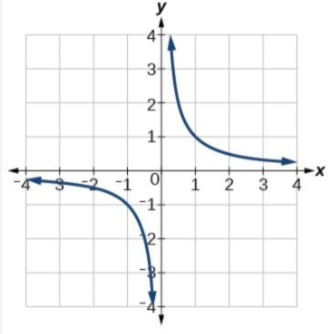
Which graph is this?
y = 1/x (reciprocal)
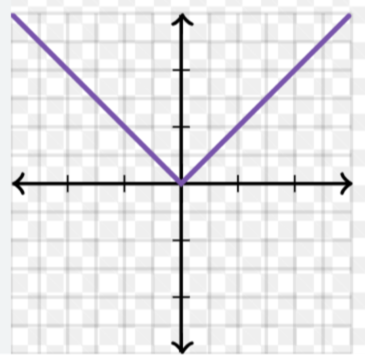
Which graph is this?
y = |x|
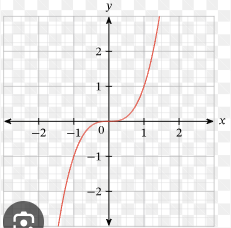
Which graph is this?
y = x³
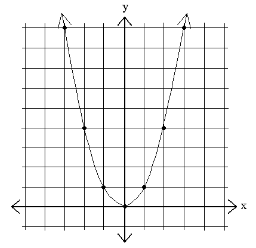
Which graph is this?
y = x²
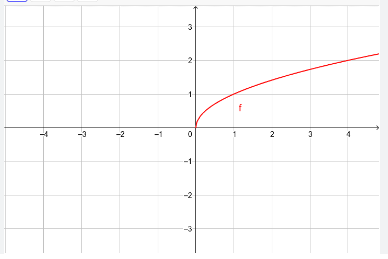
Which graph is this?
y = √x
A² + B² = ?
(A + B)(A - B)
A² + 2AB + B² = ?
(A + B)²
A² - 2AB + B² = ?
(A - B)²
A³ + B³ = ?
(A + B)(A² - AB + B²)
A³ - B³ = ?
(A - B)(A² + AB + B²)
if A > 1, Ax² + Bx + C =?
(A1x + C1)(A2x + C2) remember, that A = A1 x A2; C = C1 x C2
Standard form quadratic function = ?
Ax² + Bx + C
Vertex form quadratic function = ?
A(x - h)² + k (h and k are the vertex (h,k))
Intercept form of quadratic function = ?
A(x - C1)(x - C2) (C1 & C2 are zeroes)
How do you find the vertex point (h, k)?
(-b/2a, f(-b/2a))
A function is even if ______
f(-x) = f(x)
A function is odd if ______
f(-x) = -f(x)
If the degree of the polynomial (n in a^n) is even and the leading coefficient is positive, then …
as x → ∞, f(x) → ∞ ; as x → -∞, f(x) → ∞ (up…up)
If the degree of the polynomial (n in a^n) is even and the leading coefficient is negative, then …
as x →∞, f(x) → -∞ ; as x → -∞, f(x) → -∞ (down…down)
If the degree of the polynomial (n in a^n) is odd and the leading coefficient is positive, then …
as x → ∞, f(x) → ∞ ; as x→ -∞, f(x) → -∞ (down…up)
If the degree of the polynomial (n in a^n) is odd and the leading coefficient is negative, then …
as x → ∞, f(x) → -∞ ; as x → -∞, f(x) → ∞ (up…down)
i = ?
i² = ?
i³ = ?
i^4 = ?
i^5 = ?
√-1, -1, -i, 1, i
How do you find the possible rational zeroes of each function?
p/q (p=A, q=C)
To find the number of positive real zeroes in a function, ____
see how many sign changes there are. (e.g. +x³ - x² + 3 has 2 (+) real zeroes)
To find the number of negative real zeroes in a function, ____ (this is called Descarte’s Rule of Signs)
flip all of the signs from + → - and - → +, and see how many sign changes there are. (e.g. change x² + 1 to -x² -1, and we see that there are 0 (-) real zeroes)
How do you find the upper bound of a polynomial?
How do you find the lower bound of a polynomial?
Upper Bound: do synthetic division on the polynomial with any random number. If all of the values are positive, then that number is the upper bound (doesn’t work if the remainder is 0).
Lower Bound: do synthetic division on the polynomial with any random number. If the values go consecutively from (+) to (-) or vise versa, that number is a lower bound (doesn’t work if the remainder is 0).
If n > m, ___
there is only a SLANT asymptote (you find it by doing synthetic division, and then you make that the value of the slant asymptote)
If n = m, ___
there is a HORIZONTAL asymptote (y = a/b) (a is the coefficient of the numberator) (b is the coefficient of the denominator)
If n < m, ___
the HORIZONTAL asymptote is y = 0
How do you find the vertical asymptote?
set the denominator to 0, and solve for x
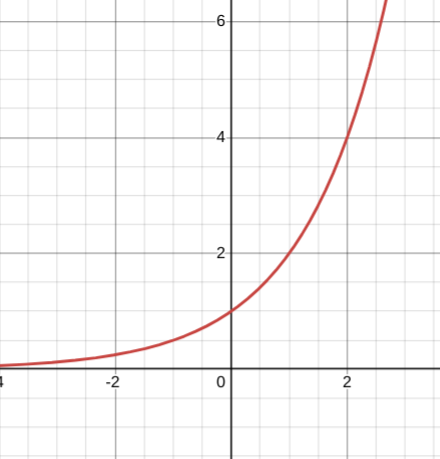
What graph is this?
y = 2x
Equation for Compount Interest
A = P(1 + r/n)nt
Equation for Half Life
A = Ao(1/2)t/h
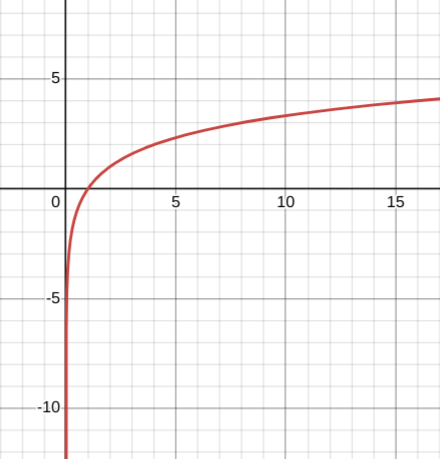
What graph is this?
y = log2(x)
Arithmetic Series Equation (+ or -)
Recursive formula?
an = a1 + d(n-1)
an = an-1 + d
Sum of a Finite Arithmetic Sequence
Sn = (a1 + an) x (n/2)
Geometric Sequence Equation (x or /)
Recursive Formula?
an = a1 x r^(n-1)
an = an-1 x r
Sum of a Finite Geometric Sequence?
Sum of an Infinite Geometric Series?
Sn = a1( (1 - r^n)/(1-r) )
S = a1 / (1-r)
nCr = ?
n! / (r! x (n-r)! )
nPr = ?
n! / (n-r)!
Equation for Distinguishable Permutations
n! / (n1! n2!…nk!)
sin =
cos =
tan =
csc =
sec =
cot =
y/h
x/h
y/x
h/y
h/x
x/y
cos(-θ) = ?
cos(θ)
sin(-θ) = ?
-sin(θ)